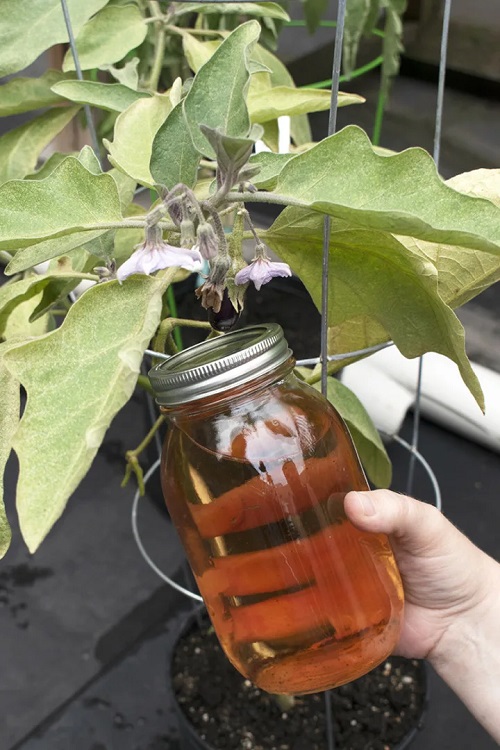Do you know Use Banana Peels to Get Rid of Aphids? If not, then you are missing out on a remarkable organic method! Read to know more!
Aphids, those tiny yet troublesome insects, can quickly wreak havoc on your garden, leaving your plants weakened and struggling to thrive. While there are numerous methods for combating these pests, one intriguing solution lies within your kitchen waste: banana peels. In this article, we’ll explore how to Use Banana Peels to Get Rid of Aphids and guide you through the process of utilizing this eco-friendly technique.
The Aphid-Banana Peel Connection
Aphids are notorious for their rapid reproduction and ability to weaken plants by sapping their sap (pun intended). As they feed, aphids excrete a sugary substance called honeydew, which can lead to mold growth and attract other pests. Enter banana peels, those overlooked remnants of a snack that might just hold the key to mitigating aphid infestations.
Pumpkin Peel Uses in Garden (#1 Fertilizer as Good as Bananas)
Banana peels are rich in nutrients, including potassium and phosphorus, which plants can absorb as they break down. However, it’s not the nutritional content that makes banana peels valuable in aphid control; it’s their chemical composition. Banana peels contain compounds that are unappealing to aphids and other pests, making them a natural deterrent.
Using Banana Peels for Aphid Control: Step by Step
1. Gather Banana Peels
Collect ripe banana peels from your kitchen. You can use fresh peels or those that have been sitting in your compost bin.
2. Blend the Peels
Blend the banana peels with a bit of water to create a thick, pulpy mixture. The goal is to break down the peels into a consistency that’s easy to work with.
3. Strain the Mixture
Strain the blended mixture through a fine mesh strainer to separate the liquid from the pulp. The liquid is what you’ll use for the aphid control solution.
4. Dilute the Solution
Dilute the strained banana peel liquid with water. Aim for a ratio of about 1 part banana peel liquid to 3 parts water. This dilution ensures that the solution won’t be too concentrated and won’t harm your plants.
Awesome Citrus Peel Uses In Garden
5. Transfer to a Spray Bottle
Pour the diluted banana peel solution into a spray bottle. This will make it easier to apply to your plants.
6. Spray Affected Areas
Thoroughly spray the diluted solution on the leaves of plants that are affected by aphids. Focus on the undersides of leaves, where aphids tend to congregate.
7. Repeat as Needed
Depending on the severity of the infestation, you may need to reapply the banana peel solution every few days until you notice a decrease in aphid activity.
Understanding Why Banana Peels Work
The compounds present in banana peels, including certain enzymes and esters, emit odors and flavors that aphids find unappetizing. By applying the banana peel solution to your plants, you’re essentially creating an unfavorable environment for aphids, encouraging them to seek sustenance elsewhere.
Surprising Potato Peel and Slices Uses in the Garden
Furthermore, banana peels contain trace amounts of nutrients that can be absorbed by plants as they break down. This added bonus enhances the overall health of your plants, making them less susceptible to aphid infestations.
Quick Tips for Effective Banana Peel Aphid Control
- Use ripe banana peels for the solution.
- Strain the blended mixture to separate the liquid from the pulp.
- Dilute the banana peel liquid with water before applying it to your plants.
- Thoroughly spray the solution on the affected areas, including the undersides of leaves.
- Monitor your plants regularly and reapply the solution as needed.
Banana Peels: Nature’s Pest Deterrent
While the idea of using banana peels for aphid control might sound unconventional, it’s a prime example of nature’s ingenuity. By repurposing kitchen waste, you’re not only minimizing your environmental footprint but also harnessing the power of natural compounds to protect your plants from aphids.
Kitchen Residues and Leftovers That You Can Use in Your Garden
As you embark on this journey of using banana peels to deter aphids, remember that each garden is unique, so observe how your plants respond and adjust your approach accordingly. With banana peels as your allies, you’re well on your way to cultivating a thriving, pest-resistant garden.





